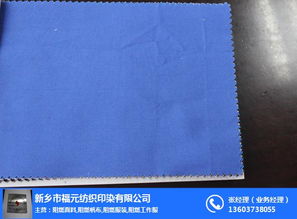The Competitive Landscape of Textile Industry
The textile industry is a highly competitive sector, with numerous players vying for market share and technological advancements. This competitive landscape is characterized by intense competition between domestic and international brands, as well as the emergence of new technologies and innovations that disrupt traditional manufacturing processes. The industry is also subject to significant environmental regulations and sustainability standards, which require companies to adopt more sustainable practices and reduce their carbon footprint. Despite these challenges, the textile industry continues to grow rapidly, driven by consumer demand for high-quality, fashionable clothing and accessories. As technology advances and consumers become more conscious of their environmental impact, the industry will continue to evolve and adapt to meet changing market demands.
Introduction: The textile industry is one of the most dynamic and competitive sectors in the global economy. With advancements in technology, innovation, and globalization, the landscape has undergone significant changes. In this article, we will explore the key factors that shape the competitive environment of the textile industry, including market trends, technological advancements, competition from emerging markets, and the impact of regulatory policies. We will also present an illustrative case study to provide insights into the challenges and opportunities faced by a leading textile company.
Market Trends: The textile industry is highly influenced by consumer preferences and economic conditions. Major trends include increased demand for sustainable and eco-friendly materials, growing interest in fashion and design, and shifts towards digitalization and automation. For example, companies like Patagonia and Levi's have successfully capitalized on these trends by launching products made from recycled materials and incorporating innovative designs.
Technological Advancements: Advances in technology are transforming the textile industry, enabling companies to produce high-quality, low-cost products while reducing waste and energy consumption. Machine learning and artificial intelligence are being used to optimize production processes, improve quality control, and enhance customer experience. Companies like Lycra and Zara have leveraged these technologies to gain a competitive edge and expand their product range.

Emerging Markets: As economies grow, emerging markets in Asia, Africa, and Latin America become increasingly important players in the textile industry. These regions offer lower labor costs, abundant natural resources, and growing consumer spending power. However, they also pose challenges such as limited infrastructure, lack of industrial capacity, and cultural differences. Companies like Uniqlo and H&M have successfully penetrated these markets through targeted marketing strategies and supply chain management.
Regulatory Policies: Regulatory policies play a critical role in shaping the competitive environment of the textile industry. Governments around the world are implementing stricter environmental regulations, anti-monopoly laws, and labor standards to ensure fair competition and protect consumers. For example, China's "Made in China 2025" initiative aims to promote domestic manufacturing and reduce reliance on imported materials. Companies like Nike and Adidas have responded by investing in local manufacturing facilities and sourcing raw materials from diverse suppliers.
Case Study: To illustrate the challenges and opportunities faced by a leading textile company, let us consider the story of Lee Cooper, a leading textile manufacturer based in the United States. In recent years, Lee Cooper has faced increasing competition from international players like Nike and Adidas, which are expanding their reach into the US market through direct sales and online retail platforms. To stay competitive, Lee Cooper has adopted several strategies, including investing in digital marketing, developing its own e-commerce platform, and partnering with influencers to reach younger consumers. Despite these efforts, Lee Cooper still faces challenges such as rising labor costs and changing consumer preferences.
Conclusion: The textile industry is characterized by its diversity, complexity, and rapid pace of change. Companies that can adapt to market trends, embrace technological advancements, tap into emerging markets, and navigate regulatory policies effectively will thrive in this competitive landscape. As we move forward, it is essential for textile companies to remain focused on innovation, sustainability, and customer satisfaction to maintain their competitive edge.
随着全球纺织行业的快速发展,纺织品公司面临着日益激烈的竞争环境,本篇报告将深入分析纺织品公司的竞争环境,并结合案例进行说明。
竞争环境概述
行业规模与增长趋势
全球纺织品行业市场规模不断扩大,呈现出快速增长的趋势,主要纺织品公司通过技术创新、产品升级和市场份额的扩大,不断巩固和扩大市场地位。
主要竞争对手分析
纺织品行业竞争激烈,主要竞争对手包括国内外知名品牌、新兴品牌以及小型独立企业,这些竞争对手在产品品质、价格、营销策略等方面各有优势。
案例分析
国内外知名品牌案例

A品牌:作为国内领先的纺织品公司之一,该品牌在国内外市场享有较高声誉,其产品涵盖了各种类型的纺织品,包括棉质、丝绸、麻质等,该品牌通过持续的技术创新和产品升级,不断提升产品质量和附加值,该品牌还注重品牌建设和营销推广,通过各种渠道提高品牌知名度和美誉度。
B品牌:国外知名纺织品公司,以其高品质的产品和良好的口碑在市场上占据重要地位,该品牌注重产品研发和创新,不断推出新产品和新款式,以满足消费者不断变化的需求,该品牌还注重市场营销和品牌建设,通过各种渠道提高品牌知名度和市场份额。
新兴品牌案例
新兴品牌近年来崭露头角,凭借其独特的创新能力和市场敏锐度,在市场上获得了不少关注和认可,这些品牌注重产品研发和技术创新,注重产品质量和用户体验的提升,注重品牌建设和营销推广。
竞争策略分析
产品策略分析
纺织品公司应注重产品品质的提升和产品结构的优化,通过不断研发新产品和新款式,满足消费者不断变化的需求;注重产品的环保性和可持续性,提高产品的社会责任感和品牌形象。
价格策略分析
纺织品公司应根据市场情况和竞争状况,制定合理的价格策略,既要保证产品的竞争力,又要保证企业的盈利能力和可持续发展能力,要注重价格策略的透明度和可追溯性,提高消费者对产品的信任度和满意度。
营销策略分析
纺织品公司应注重营销策略的创新和优化,通过多种渠道进行营销推广,提高品牌知名度和市场份额,要注重营销策略的针对性和实效性,根据不同消费者的需求和偏好,制定不同的营销策略,还应注重网络营销和社交媒体的运用,提高品牌曝光度和影响力。
纺织品公司的竞争环境日益激烈,主要竞争对手包括国内外知名品牌、新兴品牌以及小型独立企业,为了在激烈的市场竞争中获得优势地位,纺织品公司应注重产品品质的提升和产品结构的优化,制定合理的价格策略和营销策略,还应注重技术创新和产品研发,提高企业的核心竞争力。
Articles related to the knowledge points of this article:
Introduction to the北京清新针纺织品批发市场地址
The Spring of Textiles:A Refreshing Emergence of the Industry



